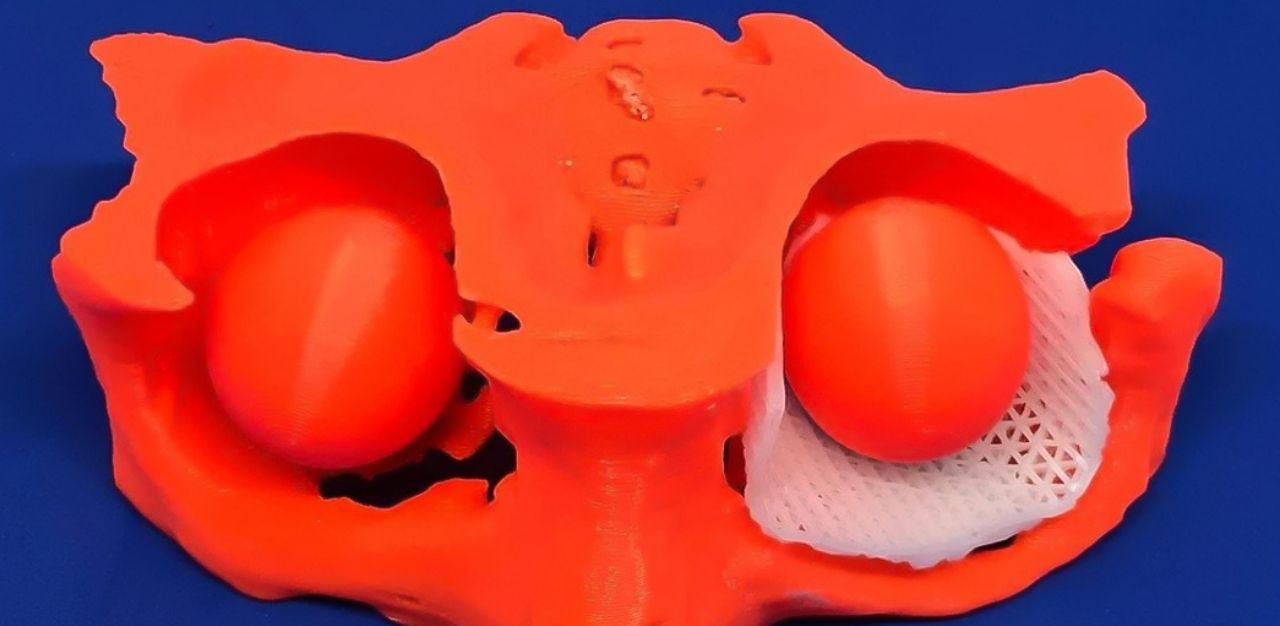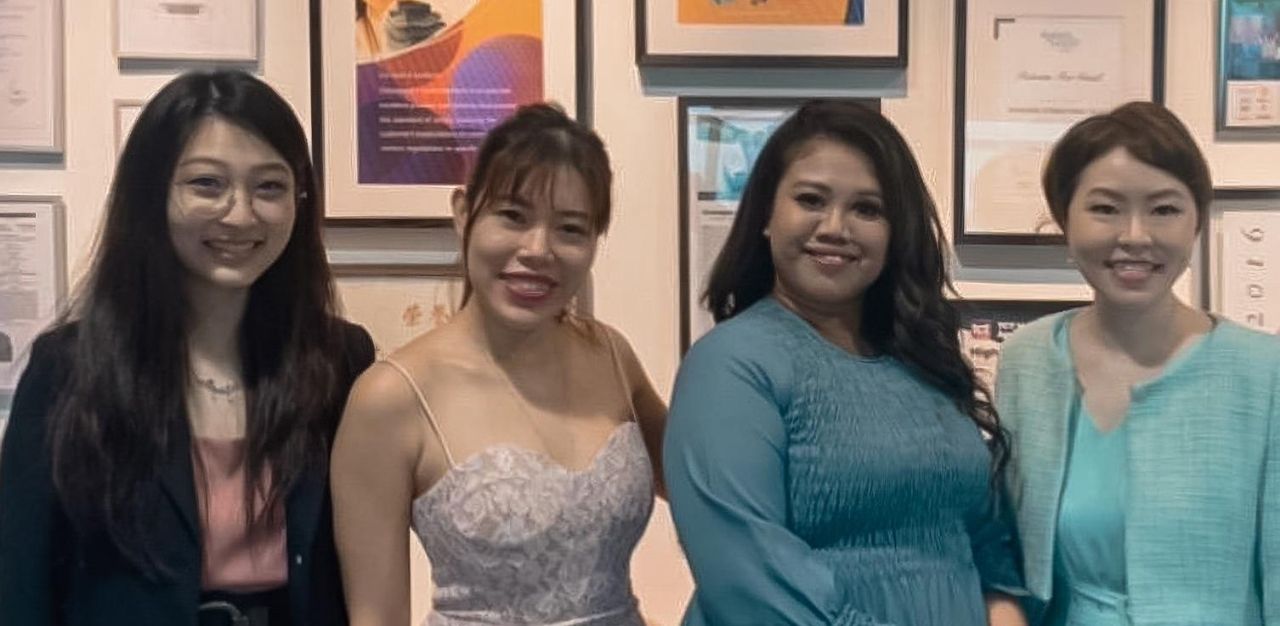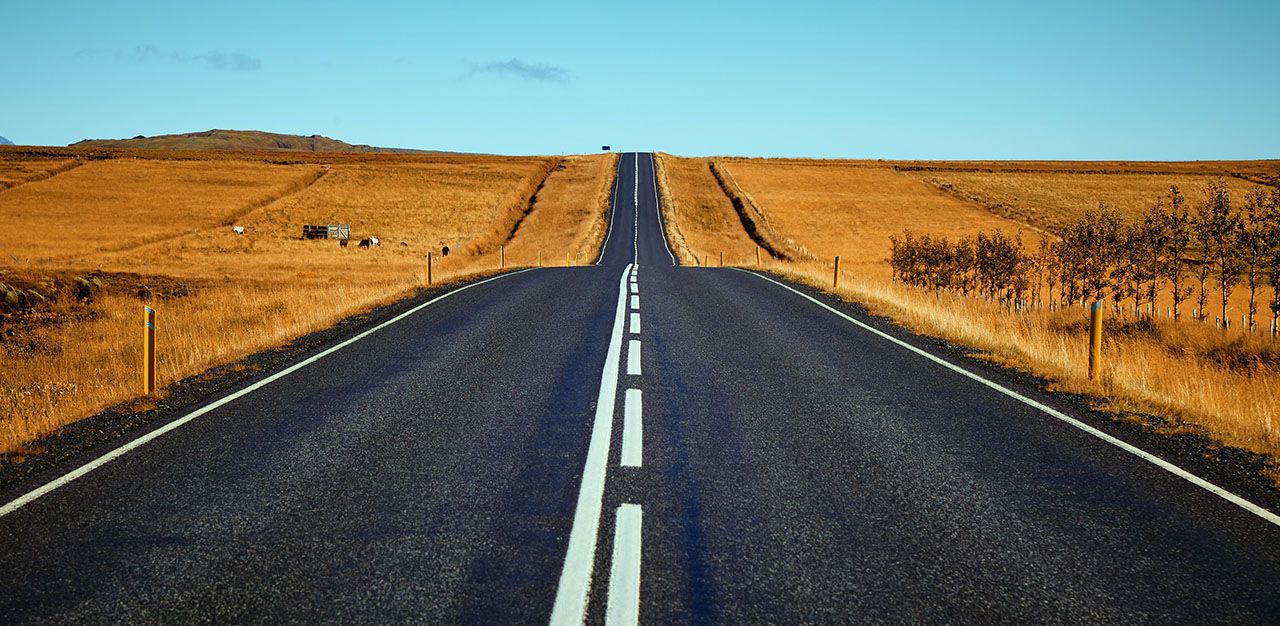As a young mother to a two-year-old daughter and three-year-old son, logistics assistant Nadiah binte Mat Ithnin’s life changed in an instant in July 2011. On her way to work, a lorry crashed into her motorcycle in a catastrophic hit-and-run accident at a traffic junction, leaving her unconscious on the road. She was 23 years old.
“The traffic light [turned] green, so I have to turn right. The lorry didn’t stop; just dash very fast, [and] the motorcycle [banged into] the lorry. But the lorry [driver] managed to run away,” she recalls.
The next thing she remembers is waking up in a hospital. Unbeknownst to her, she had surfaced from a three-day-long coma. Doctors told her that she was lucky to be alive.
“I saw my face was fallen, and I got fracture on my legs,” she says, adding that she had a broken jaw and received stitches for her eye. A titanium implant was also inserted into the left side of her face, as she had suffered facial fractures.
What followed was a long and arduous road to recovery; dealing with a deluge of physical ailments, while juggling parenting duties and responsibilities as a young mother.
“My pelvis bone, all broken, and I [used] crutches to walk,” explains Ms Nadiah. “My husband had to work. So no matter what, I have to send my kids [to school].” Her son was only just entering nursery school at the time.
“I didn’t take bus. I just walked for 15 minutes from our house to [the school],” she shares, but adds that the daily trudge to and from home slowly improved her mobility.
The accident had also ruptured the state of her mental health; Ms Nadiah felt uncertain of how to rebuild her life. “I was very sad, I blame it on myself. But I can’t do anything, you know. That time was [very] traumatic, a lot of [trauma] and depression,” she shares.
She struggled to accept what had happened to her, while recovering from the physical pain and anguish that the accident had caused.
“I didn’t talk to my husband for a month, I was really feeling so bad – I couldn’t accept myself,” recounts Ms Nadiah. “From then on, my eyes became very sensitive to the sun. I was scared to go out…. Even to buy groceries when it was sunny outside.”
The accident also took a toll on her family; she was unable to work while recuperating from the accident, and her husband had to compensate by working longer hours at night. To help make ends meet, she started an online business six months after her accident, selling make-up products on Facebook, to increase the family’s income.
But in trying to cope with the everyday practicalities of survival, while adapting to her condition, Ms Nadiah struggled to regain her self-confidence.
“When I see my face swollen like that. And I [couldn’t] walk. At first, very scared. It [took] time for me to gain back [my confidence],” she ruminates. “About one year plus, two years. Until my child, the first one, [started] going to school.”
Even though her doctor had recommended that she return for a follow-up operation on her eyelid three years after the accident, it was tough to make time for it.
“I didn’t do [it] because I [was] focusing on my children that time,” she says, adding that she had been experiencing pain on and off, and did not deem it severe enough at that point.
But another two years passed and she began to experience more acute discomfort along the side of her face when showering with warm water, which she attributes to her metal facial implant.
“Every time I bathe, I can feel the pain like [a] current… [I] feel very pain on the [side of my] nose,” she says. To soothe the discomfort, she would place tape over her eyes before showering, and wear goggles whilst cooking.
This compelled her to finally seek treatment. After a request was approved to transfer to Alexandra Hospital, which was closer to home, she met Dr Stephanie Young.
Dr Young, who is the Director of Ophthalmic Plastic & Reconstructive Surgery at Eagle Eye Centre, and a Visiting Consultant at National University Hospital Singapore (NUH), discovered that Ms Nadiah’s left eye had sunken in due to the original implant’s misalignment with her orbital floor.
Patients with injuries similar to Ms Nadiah usually undergo a major surgery entailing the removal of existing implants, osteotomies (surgical procedures involving the cutting of bones), reconstruction of facial and orbital bones, and the placement of new permanent implants.
But Ms Nadiah did not wish to have more permanent implants inserted into her body, which prompted Dr Young and her team to find an alternative solution. Along with the second surgeon assigned to Ms Nadiah’s case, Dr Gangadhara Sundar, she fell upon the idea of a bioresorbable 3D printed patient-specific implant (PSI). Unlike permanent titanium implants, bioresorbable implants are gradually absorbed into the body.
“Dr Gangadhara Sundar and I discussed bioresorbable implants. We were thinking of doing a patient-specific bioresorbable implant, so that we just needed to fit it in,” says Dr Young.

She explains that surgeries involving bioresorbable implants would be less invasive than surgical procedures involving osteotomies. While the latter involves the cutting of bones, and can require hours of reconstruction of the facial and orbital bones afterwards, 3D printed bioresorbable implants can be fitted into the impaired area without the need for osteotomies.
After further discussion, Dr Young and her team developed a 3D PSI designed to fit Ms Nadiah’s face perfectly. The team approached local firm Osteopore, which specialises in 3D printed bioresorbable implants, to help create Ms Nadiah’s implant.
The process took a few months, and involved using an image of Ms Nadiah’s face to create a 3D print of her skull.
“We had to do CT imaging (computed tomography) of her face, and then do mirroring of her normal side… We even 3D-printed her skull, and the implant was adjusted again,” explains Dr Young.
She believes that this is the first 3D-printed patient specific bioresorbable implant in the world: “It’s very new and untested, I don’t think anyone has put in [a] bioresorbable patient-specific implant before.”
Working with Osteopore to make 3D printed bioresorbable implants an industry norm, Dr Young notes that costs can be prohibitive, as a 3D printed implant could cost thousands of dollars. In Nadiah’s case, the bill was subsidised by Osteopore, which also sponsors implants for financially challenged patients upon request, as part of their corporate social responsibility efforts.
Dr Young hopes that PSIs can eventually become more affordable for patients.
“Hopefully, as bioresorbable implants become more widely available, accepted, and adapted into clinical practice, the cost will go down,” she says. “As [they] become a standard of care, it may hopefully be covered by more government [or] insurance subsidies in future, so patients do not have to let cost become a barrier in choosing an implant of their choice.”
Goh Khoon Seng, Chief Executive Officer of Osteopore, confirms that the firm is currently developing design software to automate the design of PSIs. He says that this would enable surgeons to finalise the design in their respective hospitals, before sending it to Osteopore for manufacturing, therefore reducing the number of man-hours needed to finalise designs.
PSIs can also be used for a variety of bone reconstruction surgeries, says Dr Lim Jing, Chief Technology Officer of Osteopore. He explains that PSIs are an alternative for cases where standard implants are unable to adequately fill bone defects, and are designed with surgeons based on their surgical and post-surgery recovery plans.
With Dr Young’s encouragement, Ms Nadiah, initially apprehensive, decided to undergo the procedure after learning that the implant was bioresorbable.
Her first surgery was conducted in 2019. After months of recovery, Ms Nadiah began to notice a difference, as she no longer felt any pain in her cheekbone. She underwent two more surgeries, one last year to correct her ptosis, a condition where the upper eyelid droops over the eye. The third surgery was conducted earlier this year, and she will be undergoing a fourth surgical procedure for her lower eyelid, later in the year.

Two years after her first surgery, Ms Nadiah now feels more self-assured, and is looking forward to spending more time with her children, and picking up skills like sewing. “[I’ve] become more confident and stronger… Now my confidence [is] back to normal,” she says.
Others around her have noticed her newfound confidence too.
“My parents see [the] improvement [of] my eyes. My social worker also told me that [they can see] my eyes getting better and better,” Ms Nadiah says.
Dr Young concurs: “She’s more bubbly, more cheerful… I do feel that she has gained more confidence.”
Simple pleasures in life, like going on outings with her family, and being able to exercise, are what Ms Nadiah looks forward to. Due to her eye injuries, she had developed a sensitivity to sunlight, which made leaving her house difficult.
“Last time, I can’t really go out because I can’t see sunlight. Now it’s getting better,” she says, allowing her to spend time with family outdoors.
She also hopes to resume working soon, which is her “priority”.
Ultimately, she credits her children’s encouragement for giving her the motivation to heal physically and emotionally.
“When they’re young, I see they need [a] mother’s love. So no matter what, I have to take care of them… I have to gain my confidence back,” she says.
“[They] made me stronger, to do everything.”
Join the conversations on TheHomeGround Asia’s Facebook and Instagram, and get the latest updates via Telegram.




























